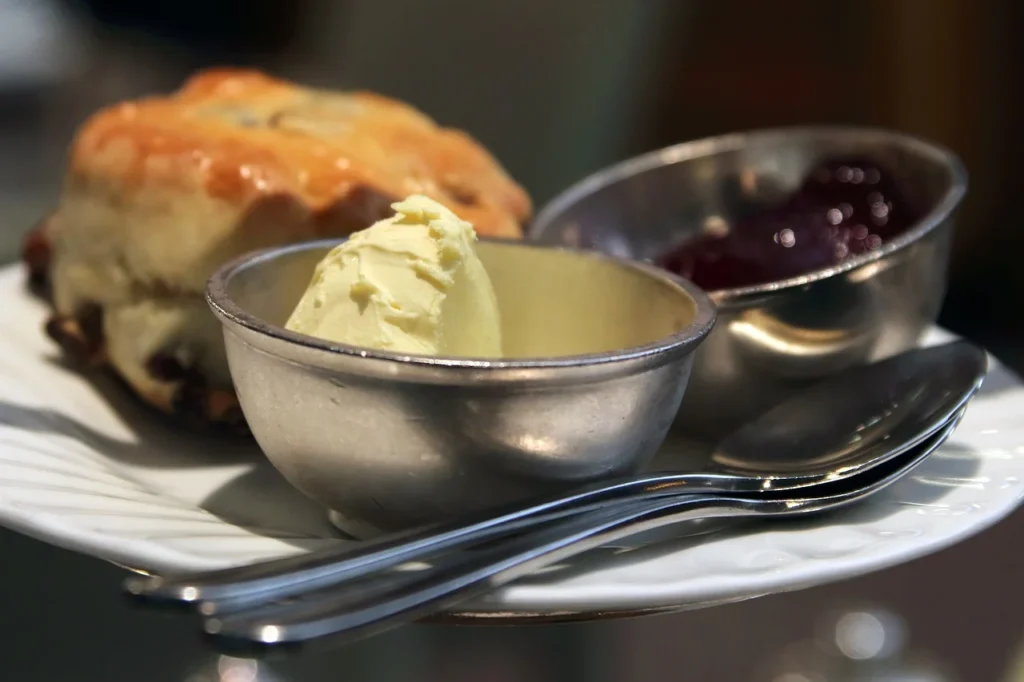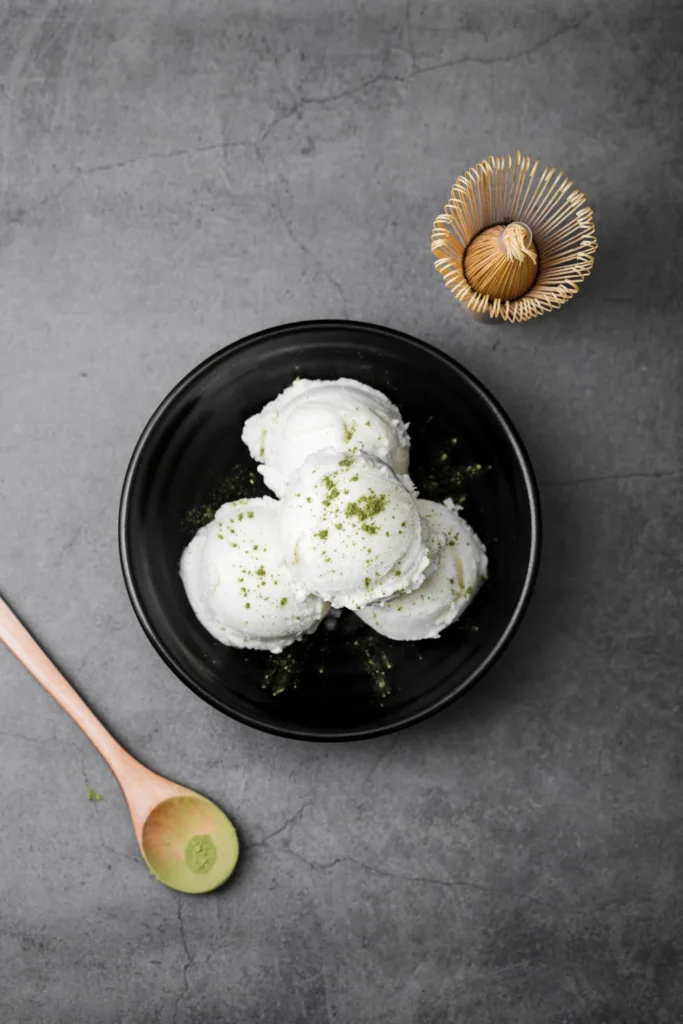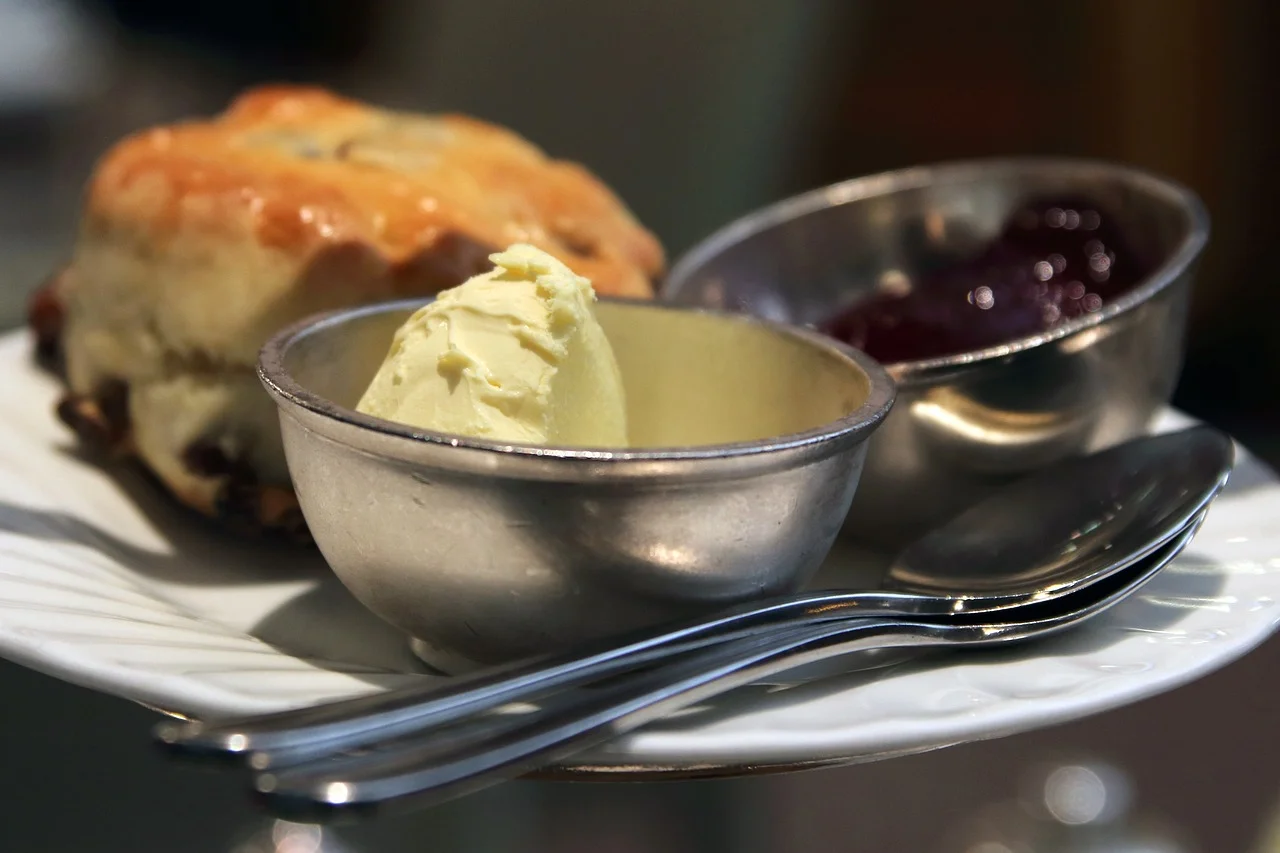Can You Freeze Clotted Cream – Step by Step Guide
Clotted cream is a unique and velvety rich dairy product known for its thick, silky texture. Traditionally made in England, clotted cream is produced by gently heating unpasteurized cow’s milk and allowing it to slowly cool overnight. During this process, the cream naturally rises and forms a thick, rich layer on the surface that is then carefully skimmed off and collected. This thick clotted cream has a decadently lush, dense and smooth consistency that makes it perfect for spooning onto scones, crumpets or eating straight. The slow heating and cooling allows the individual fat globules in the cream to naturally fuse together to give clotted cream its standout texture that is thicker and creamier than your average dairy cream but delightfully smooth and spreadable thanks to its thick clotted consistency.
Contents
- Can You Freeze Clotted Cream
- Can You Freeze Unopened Clotted Cream?
- Can You Freeze Clotted Cream Once Opened?
- What Does Clotted Cream Taste Like?
- Where does Clotted Cream Originate From?
- How is Clotted Cream Made
- How Long Will Clotted Cream Keep in the Fridge?
- How Do I Know If Clotted Cream Has Spoiled?
- Benefits of Freezing Clotted Cream
- How to Freeze Clotted Cream
- How to Freeze Different Brands of Clotted Cream
- How Long Can You Freeze Clotted Cream
- How To Defrost Clotted Cream
- Can You Defrost Clotted Cream in the Microwave?
- How Long Does Clotted Cream Take to Defrost?
- How Do I Know When Clotted Cream Has Gone Off? 2
- What’s the Best Way To Use Thawed Clotted Cream?
- Can You Refreeze Clotted Cream
- What to Do with Clotted Cream
- How to Make Homemade Clotted Cream
- Can You Freeze Homemade Clotted Cream?
- Jam First OR Clotted Cream?
Can You Freeze Clotted Cream
The short answer is YES – As someone who grew up in a dairy farming region, I’ve enjoyed many varieties of cream over the years. However, clotted cream has always held a special place in my heart due to its lovely thick and creamy texture. I know from experience that clotted cream is a bit more delicate when it comes to freezing and proper storage compared to other types of cream. The high milk fat content that results in that beautiful texture unfortunately means it has a tendency to freeze if not handled gently during the freeze and thaw process. Thankfully, after many experiments in my kitchen over the years, I’ve found that with a few simple steps you can successfully freeze clotted cream for up to 6 months and still enjoy that thick, creamy goodness.


My method is to gently spoon the clotted cream into an airtight container or freezer safe plastic bag, pressing out any excess air. I always label the container with the date and type of cream to keep track. While the texture may soften slightly once thawed, the taste is still wonderful. I’ve noticed the cream freezes and improves more cleanly when stored in smaller portions versus a large tub, with much less separating. With proper care in freezing and thawing, stocking up in bigger quantities is definitely the smarter choice for us clotted cream fans. In my opinion, while it may not be exactly the same as fresh, properly handled frozen clotted cream is far better than none at all when those cravings strike!
Can You Freeze Unopened Clotted Cream?
A common question I often receive is whether it’s possible to freeze unopened tubs of clotted cream. While the chances of it being entirely ruined are slightly higher than opened cream, it is still very doable to freeze unopened clotted cream if handled properly. The key is to wrap the entire unopened tub very securely in multiple layers of aluminum foil or place it inside an airtight freezer bag to minimize exposure to air. Be sure to label with the date and best by date. To defrost, simply let the tub sit unwrapped in the refrigerator for a full day before consuming.
Opening the tub while still partially frozen runs the risk of separation. You can certainly eat the whole tub at once, but if any is left over I don’t recommend trying to refreeze it. Your best bet is to portion the remaining cream into sealed containers or bags before returning to the freezer for up to 3 months. With the right precautions, freezing unopened clotted cream provides the flexibility to enjoy that luxury outside of its normal shelf life and seasonal availability. Just be sure to plan ahead for slow, careful defrosting in the fridge before digging in!
Can You Freeze Clotted Cream Once Opened?
For many of us, an entire unopened tub is too much to consume before it starts sitting out too long. This begs the question – can you freeze leftover clotted cream once the tub has been opened? Generally speaking, yes it is still possible but there are a couple key things to keep in mind. First, do not leave partially consumed clotted cream sitting out at room temperature for more than a day, two at most, before putting it in the fridge or freezing it. The high cream content means it can potentially go rancid fairly quickly if left out too long after opening.
To freeze leftover clotted cream, portion it into an airtight freezer safe container or bag as soon as possible after opening. Ideally, transfer any remaining cream from the original tub to storage containers on the same day so it spends minimal time exposed to air. Anything frozen can then be enjoyed within 3-6 months without breaking down in quality. Just be sure to freeze leftovers promptly for the best flavor and texture retention.
What Does Clotted Cream Taste Like?
When enjoying a spoonful of clotted cream, it is the rich and complex flavor profile that makes it truly stand out compared to other dairy products. On the palate, clotted cream delivers a lush creaminess that is both rich and sweet, with a subtle hint of buttery goodness. This sensation comes from the high fat content that results from the slow heating and cooling process applied in its production. Bite into a spoonful and the luxurious mouthfeel is at once velvety smooth yet intensely creamy. This unique production method works to create in clotted cream a delicate balance of natural sweetness from the cream alongside a caramelized undertone and nutty depths to its taste.
The slow heating and cooling process applied to make clotted cream gives it a special depth of flavor. Along with the natural sugars in the cream coming through in a bright, lush sweetness, this process imparts a nuanced caramelized dimension. Subtle notes of brown butter, baking spices and roasted nuts are fused into the cream base throughout its transformation. When enjoyed, these undertones blend seamlessly into an experience that is indulgent yet refined. The balance of rich cream overlaying more complex cooked notes makes savoring clotted cream a true pleasure for the senses.
Where does Clotted Cream Originate From?
Originating from the southwestern regions of England in the United Kingdom, clotted cream has long been a staple of British cuisine. The counties of Cornwall and Devon in particular are renowned as the traditional home of clotted cream production, where it has commonly been enjoyed for centuries. Historically, clotted cream saw widespread use as a delicious topping for scones alongside jam during afternoon tea.


To this day it remains a decadently rich accompaniment relished atop fruit scones, cakes or as a accompaniment to desserts like fruit tarts or crumbles. The unique texture and flavors of clotted cream provide the perfect complement to both sweet and savory fare throughout the British Isles. Its origins remain centered in the lush pasturelands of Cornwall and Devon where cows graze on the cream-rich grasses these regions are known for.
How is Clotted Cream Made
While clotted cream has been traditionally made using unpasteurized full-fat milk, commercially produced versions today often utilize pasteurized milk for food safety reasons. However, the classic production method remains the same. Fresh milk is slowly heated to a low temperature and then left to gradually cool overnight. During this process of heating and cooling, the milk separates into a thick, luxurious cream and thinner skimmed milk. The thick cream rises and forms the characteristic clotted consistency as the individual fat globules fuse together. This unique method of gentle heating followed by a slow cooling allows the cream to solidify while retaining maximum flavor and creaminess. The thick clotted cream is then carefully skimmed from the surface to be collected and enjoyed.
What makes clotted cream truly stand out to me is its exceptionally high-fat content, usually ranging from 55-60%. It’s this lush amount of cream that results in both its decadently creamy texture and indulgently rich flavor. Having grown up enjoying clotted cream, I still remember the first time truly appreciating its unique texture. As a child just taking that first taste, I was struck by its luxurious creaminess and depth of flavor – an experience I’ve never found duplicated in any other dairy product. To this day, clotted cream remains one of my most treasured treats thanks to that incomparable texture where each bite feels like pure indulgence. Between bites of my favorite scones topped high with clotted cream, I always take a moment to savor its lusciousness. Its production method concentrated that luxurious cream into a singular texture and experience that food lovers the world over have come to appreciate.
How Long Will Clotted Cream Keep in the Fridge?
The typical shelf life for an unopened tub of clotted cream stored in the fridge is around 1 week after the listed expiration date. However, once opened the creamy and perishable nature of clotted cream means it’s best consumed within a few days. Many advise finishing any opened tub of clotted cream within 3-5 days of first breaking the seal. This short window is due to the high fat and sugar content that can cause clotted cream to spoil more quickly once exposed to air. Thankfully, freezing can help extend the lifespan of leftover clotted cream as it maintains quality well in the freezer for a few months. Those who don’t use an entire tub within a few days of opening are advised to portion and freeze any uneaten portions for later enjoyment.
How Do I Know If Clotted Cream Has Spoiled?
It is important to be aware of the signs that indicate clotted cream is no longer safe for consumption.
Smell
Give the clotted cream a sniff to detect any sour or off odor. A fresh clotted cream should have a pleasant, creamy aroma.
Mold or Unusual Growth
Check the surface of the clotted cream for any mold or unusual growth like fuzzy patches or green spots, as discoloration is a clear indication it has spoiled and should not be consumed.
Texture
Clotted Cream should have a smooth, thick consistency. Notice if there is any separation, curdling or sliminess which are signs it has gone bad.
Taste
If uncertain of the quality, do a small taste test. Spoiled clotted cream may have a tangy or sour taste indicating bacterial growth and spoilage. Freeze any questionable clotted cream.
Benefits of Freezing Clotted Cream
Freezing clotted cream offers several key benefits for this rich dairy product. Firstly, it significantly extends the shelf life, allowing those who don’t consume an entire tub within days of opening to prevent wastage by freezing portions for later. Frozen clotted cream also adds convenience — it can be enjoyed any time of the year since it remains readily available in the freezer for tea times, scones or as a ingredient. Freezing is a handy way to preserve leftovers or have some on hand for a special occasion or gathering. In fact, freezing is one of the main reasons more clotted cream isn’t wasted at home. By dividing extra tub amounts into individual portions and stashing in the freezer, households can better manage this special cream and help reduce waste of such a luxurious treat.
RELATED: Can You Freeze Pancake Batter
RELATED: Can You Freeze Risotto
RELATED: Can You Freeze Brownies
How to Freeze Clotted Cream
Freezing clotted cream is a simple process that will help preserve this luxurious dairy product for future use. Here is a step by step guide:
1- Choose Fresh Clotted Cream
Ensure the clotted cream you freeze has not passed its expiration date and is of high quality for best results.
2- Portion the Cream
Portion the cream into individual servingsized portions or units, using airtight containers, ziplock bags, or silicone ice cube trays to freeze in small batches for easy defrosting as needed.
3- Pack in Airtight Containers
Pack each portioned serving of clotted cream into an airtight, freezer-safe container leaving a small amount of space for expansion. Seal the container tightly to prevent air and the formation of ice crystals during freezing.
4- Label and Date
Clearly label and date each sealed container or tray of clotted cream to keep track of contents and storage date for freshness.
5- Freeze:
Place the sealed containers or trays in the freezer on a flat surface and store for future use.
Important Note
Freezing clotted cream may slightly affect the taste, but it is still recommended to thaw completely before use in recipes or for enjoying plain. As the clotted cream thaws from frozen, its texture will soften but may remain denser than freshly purchased cream. For optimal enjoyment, allow frozen portions of cream to fully thaw in the refrigerator overnight before spreading onto still-warm scones and topping with strawberry jam for an afternoon tea delicious treat. Though the freezing process lightly impacts the texture, it ensures availability of this special clotted cream for recipes and meals even when none remains fresh in the fridge.
How to Freeze Different Brands of Clotted Cream
Rodda’s
According to Rodda’s FAQ, their clotted cream is unsuitable for home freezing as the cream may become grainy when frozen then defrosted. Major brands advise freezing their products could degrade quality and result in a negative experience with the product.
Trewithen Dairy
Trewithen Dairy’s website states their clotted cream can be successfully frozen to extend its life. A slight textural change may occur upon thawing but the flavor should not be affected. They recommend use within 2 months for best taste.
Supermarket’s Own Brand
Many supermarket’s own brand clotted cream have packaging that advises it is ‘unsuitable for freezing’. Brands like Tesco and Asda claim their product is not suitable for home freezing
How Long Can You Freeze Clotted Cream
Freezer temperatures should maintain a constant freezing temperature of 0°F (-18°C) for safest storage. When properly packaged in airtight containers or freezer bags, clotted cream can be kept frozen for approximately 2 to 3 months before the texture and flavor begin to deteriorate. Freezing helps maintain the cream’s quality for a reasonable timeframe, but there is some potential for ice crystal formation the longer it is frozen which could result in slight textural changes upon thawing. Most sources advise 2-3 months as the recommended time frozen before the cream’s quality declines. Be sure to clearly label containers with the date of freezing for easy reference of oldest portions. Properly stored, frozen clotted cream remains safe to eat for this period.
How To Defrost Clotted Cream
For best results, defrosting clotted cream should occur slowly in the refrigerator overnight rather than at room temperature or in the oven, which can alter the delicate texture. To defrost, simply transfer the frozen container or tray of cream to the fridge to thaw overnight. Allowing the cream to melt gradually overnight in the refrigerator helps retain the optimal texture once fully softened. Avoid leaving it out on the counter at room temperature, which may cause the fats to separate or the texture to become grainy. By defrosting chilled in the fridge, the cream returns close to its original smooth consistency when freshly opened.
Can You Defrost Clotted Cream in the Microwave?
Using the microwave may seem like a quick way to speed up the defrosting process for clotted cream. However, microwaving is not recommended as it can easily ruin the texture. The high heat from microwave defrosting causes the delicate fats and proteins in the cream to break down and separate prematurely, resulting in a grainy or curdled consistency. The dense texture of clotted cream makes it difficult to thaw evenly in the microwave without some portions overheating while others remain frozen. For the smoothest results, it’s always best to gently defrost clotted cream overnight in the refrigerator versus risking damage to the cream’s luxury texture in the microwave. The slow fridge method ensures a silky-smooth product once fully thawed.


How Long Does Clotted Cream Take to Defrost?
When frozen portions of clotted cream are transferred to the refrigerator to defrost, it typically takes around 24 hours for the cream to fully soften. Smaller portions may defrost faster. However, after 12 hours or so the outer edges will have softened enough to serve while the center remains lightly frozen. This results in a chilled “frozen-centered pot” of cream perfect for spreading. But for complete room temperature texture reconstruction, plan ahead and give frozen clotted cream at least overnight and up to 24 hours in the fridge before consuming for full defrost. The slow refrigerator method patience ensures ideal re-creamification.
How Do I Know When Clotted Cream Has Gone Off? 2
Once I’ve defrosted my clotted cream in the fridge, I try to consume it within 3-4 days for the best flavor. Of course, with delicious treats it’s sometimes hard to resist! But after a week, I’ve noticed the texture starts to become looser and it may begin yellowing slightly. Yuck, who wants to spread that on their scones? An acidic smell is also a telltale sign it’s time for the cream to go in the bin, not on my breakfast. As someone who enjoys clotted cream a few times a week, I’ve found this general timeframe is a good guideline. It keeps me and my family safe from any spoiled dairy. I’d hate for all that rich creaminess to go to waste, or worse, make someone feel unwell. Within a few days is best to savor that fresh, thick cream taste I love so much.
What’s the Best Way To Use Thawed Clotted Cream?
While thawed clotted cream may experience minor textural changes compared to fresh, it still makes for a delicious treat when used strategically. I find the cream softens most enjoyably on warm scones, crumpets or toast as the heat gently melts it into an even creamier spread. The higher temperature helps offset any slight graininess that may develop in frozen storage. You can also stir it into cooked dishes like an omelette or quiche where the thawed texture is less noticeable and adds rich creaminess to savoury fillings. Using leftover thawed cream in cooking allows me to still fully appreciate its lush taste, even if it lacks the same smooth consistency as when first opened. A versatile ingredient worthy of various preparations!
Can You Refreeze Clotted Cream
If I find myself with leftover clotted cream that has already been thawed from the freezer, I like to divide it into smaller portions before refreezing. At first I was a bit hesitant about refreezing clotted cream but found that by portioning out the thawed cream into individual ramekins or silicone molds, it freezes without issues for future use. Refreezing in smaller quantities helps prevent larger ice crystals from forming. I also date and label the portions clearly. This allows me to only thaw what I need rather than have a big tub going bad. By properly dividing and freezing smaller refrozen amounts, I’ve had good results withtexture and flavor after multiple freezings. It’s a handy way to avoid waste when enjoying this luxurycream.
What to Do with Clotted Cream
The rich, creamy texture of clotted cream opens up many delicious ways to enjoy it. Here are some ideas I just love:
1- Nothing beats enjoying clotted cream the traditional way – spreading a generous dollop on freshly baked scones alongside my favorite homemade raspberry jam. The sweet tang of the preserves pairs perfectly with the luxurious cream for a warm, delectable treat.
2- I love dolloping clotted cream on desserts like pies, tarts, fruit crumbles and salads for a creamy richness. It takes my homemade strawberry crumble or fruit salads to the next level.
3- Homemade pancakes and waffles are truly indulgent with a pad of butter and drizzle of syrup, especially when topped with a spoonful of my thicker clotted cream. The fluffiest pancake sandwiches too!
4- A spoonful folded through instant or homemade rice and tapioca puddings adds velvety smoothness. My family always requests more.
5- Another question is “can you cook with clotted cream?” Yes, clotted cream can also be incorporated into savory dishes. A spoonful folded through risottos, pasta sauces or soups adds richness. It works well in place of heavy cream in recipes like creamy mushroom pasta or chicken pot pie. A dollop on top of shepherd’s pie or fish pie before baking creates a golden brown crust. Clotted cream is surprisingly versatile beyond just sweet treats.
6- For a flavorful twist, try using clotted cream to fill and frost cakes and cupcakes instead of regular frosting. It pairs wonderfully with flavors like chocolate, berries or citrus. Raspberry muffins are one of my favorite ways to enjoy this lovely cream.
How to Make Homemade Clotted Cream
As a curious cook, I was wanting to try making clotted cream at home after becoming such a big fan of enjoying the artisanal versions. According to the recipe from my favorite food blog Curious Cuisiniere, it is actually quite simple to make with just two main ingredients – heavy cream and time. All you need is 2 cups of heavy cream. The process allows the cream’s own rich dairy fat to separate and rise to the surface naturally over a period of slow, gentle heating. I will have to give this recipe a try myself and see if I can achieve luxuriously thick, homemade clotted cream!
Can You Freeze Homemade Clotted Cream?
After making my first successful batch of homemade clotted cream, I was wondering if it could also be frozen for future use just like the store-bought variety. From what I’ve read, freezing homemade clotted cream is absolutely possible with a few extra steps not needed for store-bought. It seems the home-cooked cream has a thinner consistency right after making compared to the grocery variety. To imitate the thicker texture after freezing and thawing, experts recommend chilling the cream overnight before portioning and freezing. This allows it to firm up to a similar spreading consistency as what’s found in the supermarket. With these tricks, I’m looking forward to freezing my future batches of homemade clotted cream for easy enjoyment down the road.
Jam First OR Clotted Cream?
There seems to be an endless debate about whether it’s best to top a perfect scone with clotted cream first or jam. As someone who freezes blocks of clotted cream to have on hand, I’ve discovered the order does truly matter. If frozen clotted cream is slathered onto the warm scone straight from the freezer, it tends to slide right off before melting.


Therefore, I vote for starting with a layer of jam which acts as asticky base. This allows the time for the frozen clotted cream to soften slightly upon contact with the scone before becoming a creamy sandwich. So from a purely practical texture standpoint when freezing is involved, jam wins out as the crucial first layer in my book.
Conclusion
In exploring various uses for clotted cream in my baking and cooking, I discovered freezing to be a convenient way to have this luxurious ingredient on hand year-round. While texture suffers slightly, several months’ worth of testing different freezing and thawing methods in my kitchen helped identify techniques that preserve much of clotted cream’s soft richness. By portioning before freezing and allowing slow refrigerator thawing, I find it brings near as much joy to my scones and desserts straight from the freezer.
Having a steady stockpile means I can easily inspire moments of indulgence, like spooning velvety dollops over warm peach crisp or into steaming mushroom risotto. In fact, experimenting with both sweet and savory applications became one of my favorite ways to fully appreciate this special dairy. Overall, with a few adjustments to process, freezing has been incredibly worthwhile for maintaining my access to the creamy pleasure that is clotted cream.
FAQs
1- What happens if you freeze clotted cream?
Freezing clotted cream can cause it to dry out and become crumbly. However, ensuring it is fully defrosted in the refrigerator allows the creamy texture to return. Some producers do a rapid “blast freeze” which better retains quality for international shipping. Home freezing at a slower rate can slightly alter the consistency.
2- How do you defrost clotted cream quickly?
It’s best not to defrost clotted cream quickly due to its high dairy fat content. Leave it overnight in the fridge for slow thawing. Never thaw at room temperature which could cause safety issues.
3- Can you preserve clotted cream?
Both store-bought and homemade clotted cream are highly perishable. Stored in the fridge, homemade may last up to a week while commercial varieties typically last 3 days. Freezing homemade extends the shelf life to about a year.
4- Can you freeze clotted cream cake?
Yes, you can freeze cakes containing clotted cream. Chilling first helps the texture. Wrapped well, it will maintain quality in the freezer for up to 6 months. The clotted cream may dry out sooner if frozen for longer periods.





